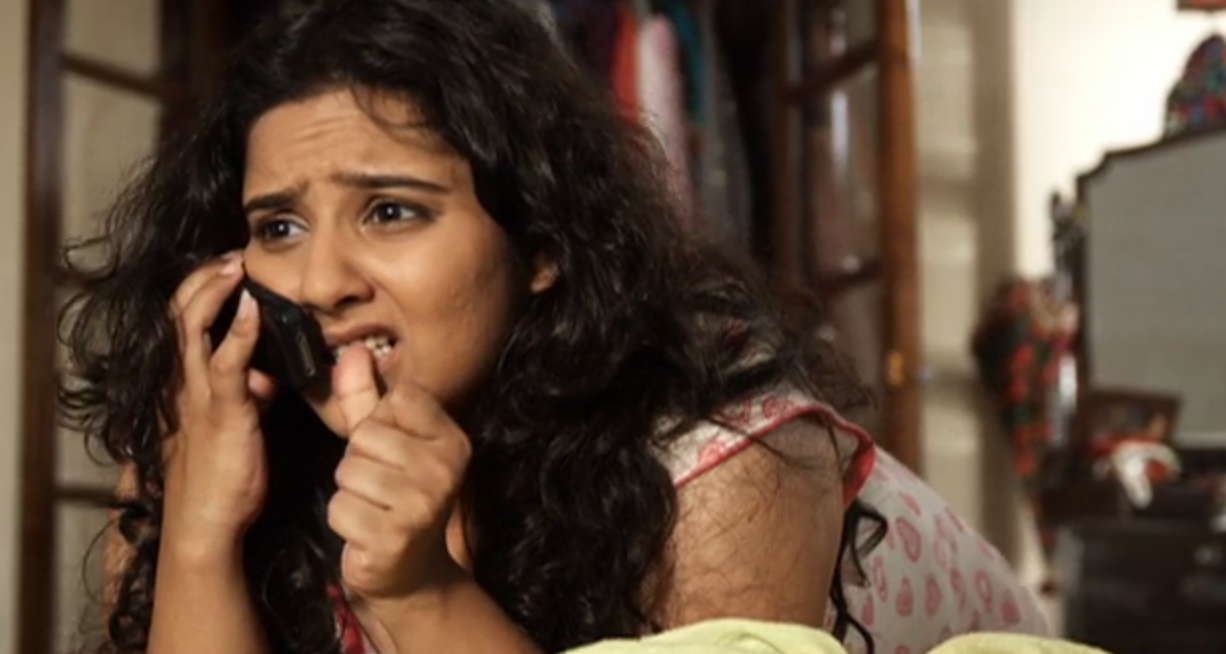After everyone’s favourite wallflower Jassi from Jassi Jaisi Koi Nahin underwent a dramatic physical makeover, the show became insufferably unwatchable. With her entry into the realm of what the show-runners deemed conventional beauty, it seemed like Jassi had been gradually drained of the attributes that made her so relatable and endearing to so many in the first place. On reflection though, it’s clear that it wasn’t just the sartorial transition that had rankled so much. The problem was that the show constantly pitied its own protagonist’s ordinariness and refused to let her move beyond being more than a passive doormat.
In contrast, when YRF’S Mahi Way aired a few years later, promising to right many of the Jassi wrongs, it seemed almost too good to be true. Following a 25-year-old bright-eyed fashion magazine’s agony-aunt columnist and her quest to find love, the show offered a staple girl-next-door protagonist – one who also happened to be overweight. It seemed like wishful thinking to hope that this too would not devolve into crude fat-shaming punchlines.
Mahi Way, however, proved to be a study in subverting expectations. In a pop-culture landscape that still remains ruthlessly unforgiving to any woman who doesn’t approximate the runway body ideal, and where the ‘fat girl’ has been reduced to a stock one-dimensional character to be ridiculed or pitied, Mahi Way was and remains a representational landmark on multiple levels.
Mahi Way’s primary triumph was that it allowed its protagonist to be a well-rounded, complex character. She brimmed with idiosyncrasies and contradictions, which weren’t simply cosmetic additions but themes that were addressed in the show. She was feisty, opinionated, capable and competent, but was also someone who could be chronically unassertive, particularly when it counted most. Like anyone else, Mahi could often be petulant, unreasonable and self-involved, but the show didn’t use these traits to punish her. The moments spent with her friends and family reflected disarmingly honest dynamics and carried a genuine tenderness that made it easy to root for her.
It was a relief beyond measure when, unlike Jassi’s downward spiral into conformity, Mahi Way did not take the route of a narrative cop-out and compel its protagonist to shed the kilos to comply with a rigid idea of beauty. Though it lay at the core of her insecurity, the show ensured that Mahi’s weight didn’t define her, even as the world (family, friends and co-workers) around her indicated otherwise – deliberately or not. In perhaps its most progressive move, the overweight girl was allowed the audacity of sexual prerogative and validated her sexual desire. Through the course of her romantic misadventures, Mahi gradually learnt to rid herself of her own internalized toxic self-loathing. Though her path to intimacy was often riddled with awkwardness and uncertainty, at no point did it warrant shame.
The show’s other strength was the arcs it plotted for its seemingly archetypal characters, etching out their inner lives beyond the obvious. Whether it was the vain sister who relentlessly mocked Mahi, the best friends she sometimes took for granted or the dapper object of affection Mahi thought would reject her, the supporting characters were put in situations where they could learn from each other and eventually grow.
Even as it subverted expectations, Mahi Way did so without tipping over into heavy-handed and self-conscious social messaging. Its essential levity never undercut its more emotionally charged moments as well.
It is no secret that the romantic comedy genre’s propensity to mix escapist fantasy, heightened drama and archetypal characters has often led it to be written off as vapid. Conversations about representation, however, have begun to engage with the power the genre wields. For instance, as the gay coming of age film Love, Simon released across the US last month, some early reviews of the film lamented its lack of edginess, suggesting that its unabashed genre fidelity made it too sanitized and thus unnecessary for today’s ‘evolved’ young adult audiences. This dismissal by some critics was decried by fans of the film on social media, which was soon abuzz with LGBTQ teens speaking for themselves and rejecting these claims. They asserted that this combination of schmaltz and quality representation was exactly what they needed but had never thought they’d ever get to witness on the silver screen.
Just as Love, Simon seems to have reinvented the mainstream teen-romance wheel for many LGBTQ teens, Mahi Way has re-imagined the potential of romantic comedies for any girl struggling with body issues and insecurities. Even in today’s mediascape, it proves that the romantic comedy genre’s mass appeal can be used towards normalizing the perspectives of people that are rarely seen or heard.
With its upbeat optimism, emotional sincerity, and just the right amount of cheekiness, Mahi Way accomplished what is arguably the most important task of positive media representation – inspiring boundless empathy and encouraging acceptance.
Aamaal Akhtar is a research scholar in Modern History at Centre for Historical Studies, JNU.

